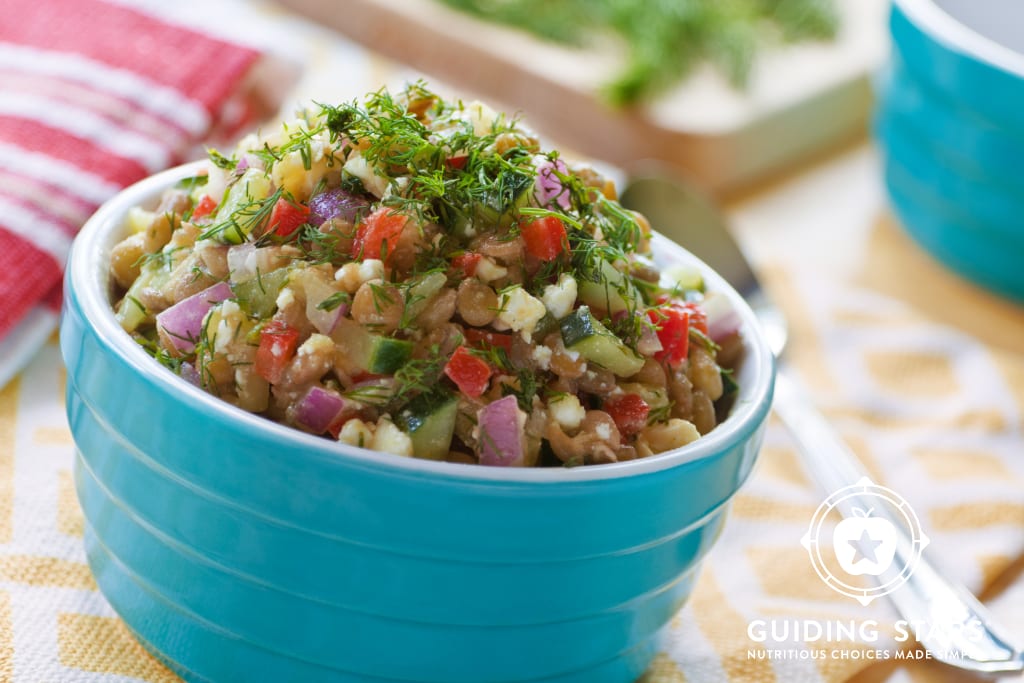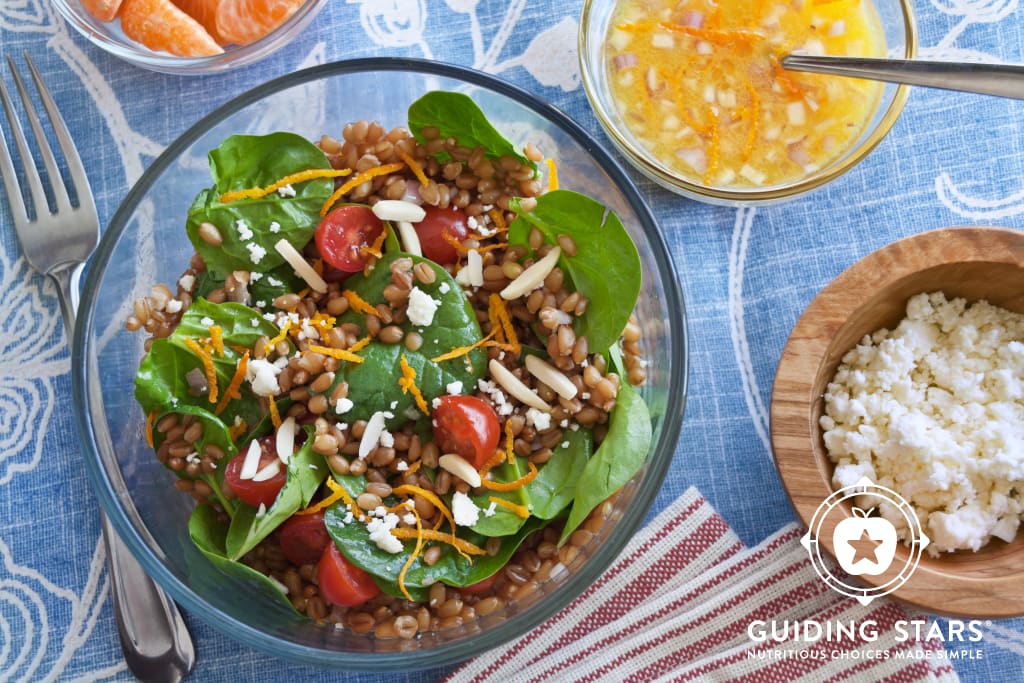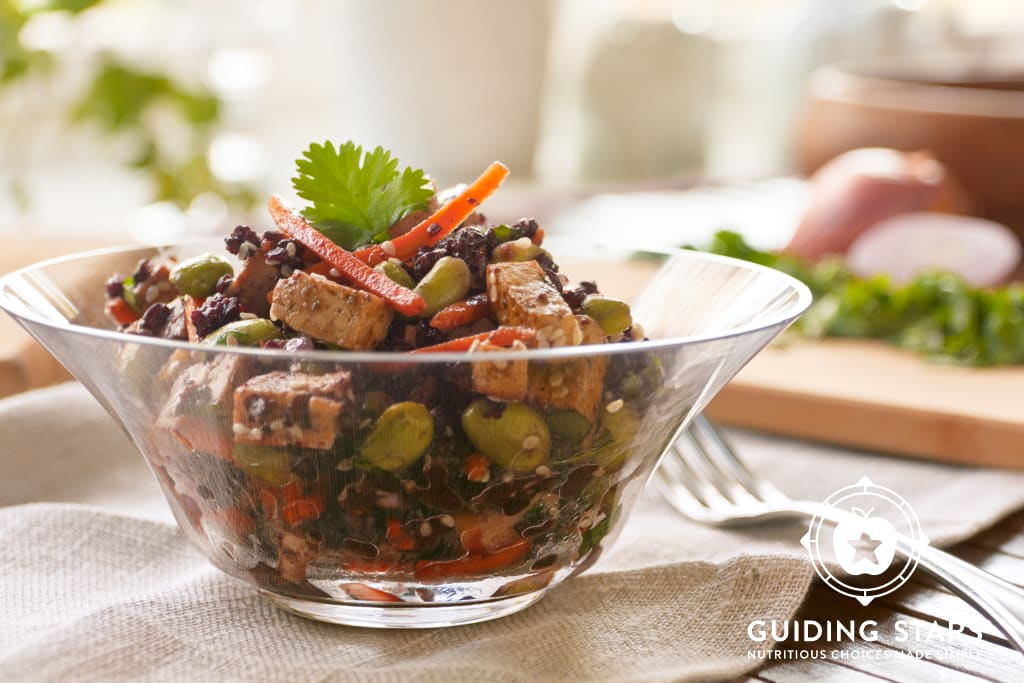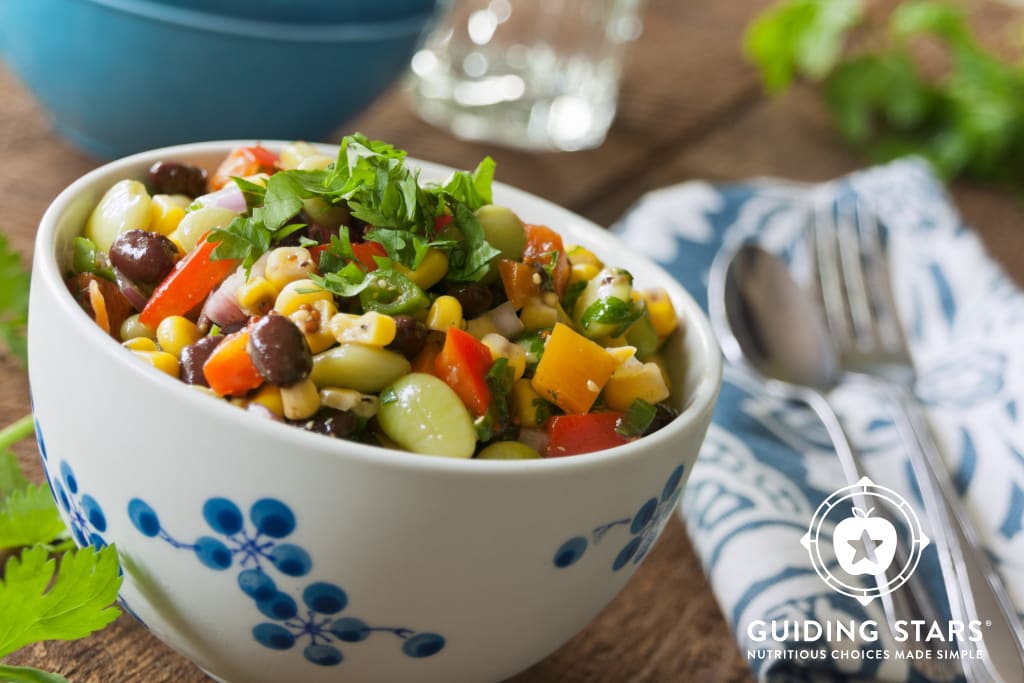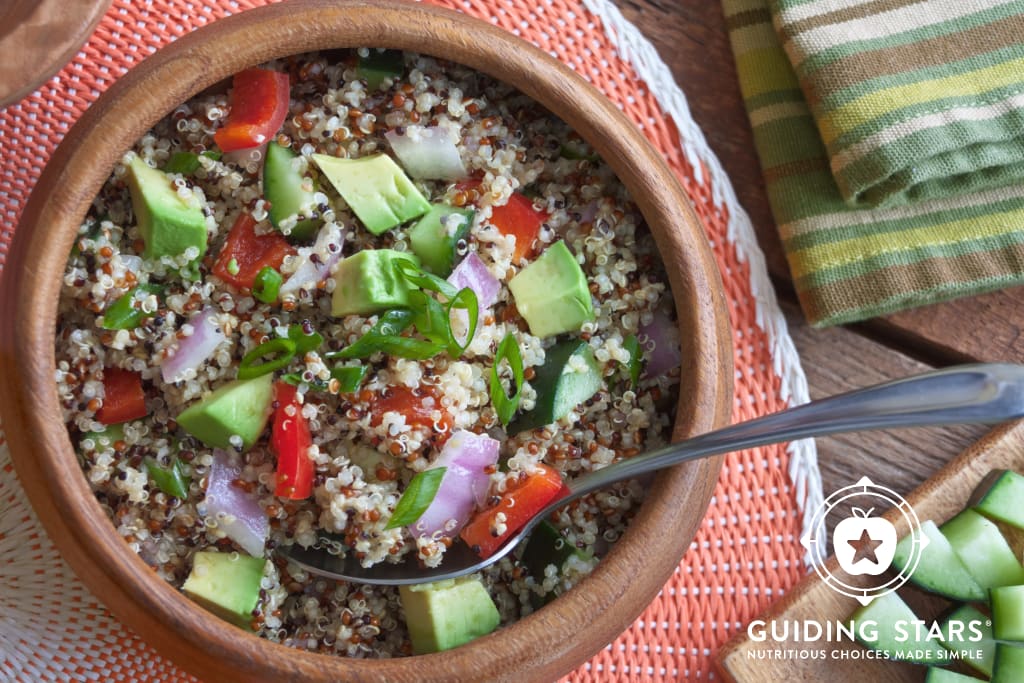
Whether you’re “packing a lunch” as you work from home, feeding kids at home, or are part of the essential workforce (thank you!) that needs to eat lunch outside of your home, many of us are needing to rely less on restaurants and cafeterias and more on home cooking for an extra meal each day. The classic choice of sandwiches isn’t necessarily a viable option. Though deli-meat sandwiches are easy, they can be expensive. They’re often high both in sodium and saturated fat. They’re also not the best option from a food safety perspective if you’re only shopping every 2-3 weeks.
So what’s a better go-to option?
My personal list of criteria for an excellent packed lunch dish is as follows:
- Stores in the fridge nicely, so can be made ahead
- Doesn’t need heating
- Ingredients are less dangerous in iffy refrigeration
- Texturally interesting
- Delicious
- Has vegetables and whole grains
- Is filling (i.e., has a bit of protein and fat)
I have found that the kind of dish that consistently meets all of these criteria every single time is a cold grain salad. We’ve got a bunch of these in the Guiding Stars recipe database, a few of which are highlighted here, but I think it’s important to emphasize that you do not need a recipe for a cold grain salad. They are incredibly flexible. What you need is a template.
Template for a Cold Grain Salad
Chewy, Whole Grains
You start with a base of chewy grains or lentils (which are a pulse and can cover your protein needs). Chewing supports satiety and also slows down your eating pace, which is helpful for listening to your body about how much you need. Chewy grains also tend to be whole grains, which Guiding Stars gives foods points for. Cook them in some low-sodium broth of your choice for the best flavor.
- Brown, black, or wild rice
- Wheatberries
- Barley
- Lentils (green or brown, not red)
- Millet
- Farro
- Bulghur
- Quinoa
Crunchy Vegetables
Any vegetable you would eat as a crudité can be chopped and tossed in a grain salad. I like to use a proportion of 1:1 grain to mixed veggies, and I liked to have 2-3 different colors in my veggie mix. I tend to cut the pieces fairly small so the dish can be eaten comfortably with a spoon, but you do you. The veggies marked here with (f) work beautifully just dumped out of a pack of frozen veg with no cooking. The rest I would do raw from fresh. Don’t let this list stunt your imagination. If you’ve got a weird vegetable to use up, you can probably chuck it in.
- Bell peppers
- Cucumbers
- Celery
- Carrots
- Zucchini
- Onion
- Green beans (f)
- Cabbage
- Peas (f)
- Corn (f)
- Radishes
- Broccoli
- Cauliflower
- Leafy greens
Fruit
Fruit is an excellent way to add bursts of sweetness and/or tartness to a salad. It’s also nice to have a softer element to contrast with the chewy grains and crunchy vegetables. You can used fresh, frozen, or even dried. With dried fruits, however, look for the Guiding Stars to help you choose options that have not been soaked in added sugar.
- Apricots
- Peaches
- Grapes
- Tomatoes
- Mangoes
- Raisins
- Apples
- Pineapple
Protein, Salt, and Fat
I’m lumping these three things together because there’s a lot of overlap in the foods that provide them. You don’t need to go out of your way to get enough of these in your diet. As Americans, we tend to eat too much of all three as it is. Still, protein and fat contribute to satiety, and a little salt does a lot for that flavor component. To build a salad that’s more likely to be worthy of Guiding Stars, choose lean proteins, unsaturated fats (like olive oil), and be sparing with salty ingredients. This should be the category forming the smallest percentage of your dish.
- Beans
- Lean meat, like chicken breast
- Eggs
- Nuts
- Avocado
- Cheese (esp. goat, feta, and blue)
- Olives
- Sardines
- Anchovies
- Capers
- Roasted red peppers, jarred
- Salad dressing (ideally a vinaigrette)
Flavor
I’m going to assume you’ve hit the salt and fat elements of flavor with your above ingredient choices, so I’m going to focus on flavor-boosting ideas that bring neither to the table.
- Salt-free spice blends (Say it with me: Lemon Pepper.)
- Herbs (Fresh are pretty, but dried taste great too.)
- Sun-dried tomatoes (not packed in oil)
- Roasted red peppers, freshly prepared
- Garlic
- Nutritional yeast (cheese-like)
- Low-sodium hot sauce (many already are)
- Citrus juice or zest
- Vinegar
Sample Recipes
If you’re more comfortable working with a recipe, or would like help deciding how to dress a salad so that it’s more likely to earn Guiding Stars, explore these:
Lemony Lentil Salad with Feta
One of my personal favorites. French lentils are my favorite for texture.
View recipe »Wheat Berry Salad with Spinach, Orange & Almonds
Wheat berries have a long cooking time, but store beautifully in the freezer when cooked for easy batch prep.
View recipe »Black Rice Salad with Miso Dressing
When making a rice salad in advance, spread the hot grains out on a baking sheet and fluff to cool quickly for food safety.
View recipe »Ginger Quinoa Salad
Avocado doesn't store well cut, so prep everything but the avocado and prep the avocado the day you plan to eat it.
View recipe »Succotash Salad
I stuck corn with veg for the sake of noting freezer-friendliness, but you can treat it like a grain too.
View recipe »